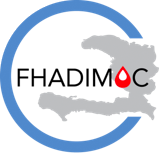In the vast majority of cases, the precise mechanism of hypertension remains unknown, however, a number of statistically related circumstances can be identified for it. This is called a risk factor. This term implies that the causal link is not established (only statistical risk). The frequent coexistence of many of these factors in the same patient makes it a multifactorial disease.
Age
Blood pressure increases with age. This increase is continuous for the systolic, while the diastolic lowers after the sixty years old, probably by a mechanism of stiffening of the arteries. Thus, less than 2% of subjects under 20 years old are hypertensive, while they are more than 40% after 60 years old.
Sex
Before menopause, female hormones are a protective factor against cardiovascular risk. After menopause, the cardiovascular risk curve of women gradually converges with that of men of similar age and body size.
Heredity
There is a genetic determinism of essential hypertension whose composite nature has been demonstrated.
Salt
Excessive salt intake
The most studied factor was the consumption of dietary salt (NaCl) whose importance could, if not trigger, at least maintain hypertension. Excess salt is said to be responsible for 25,000 deaths per year in France (75,000 cardiovascular events).
Other Food Products
- Chronic consumption of alcohol increases blood pressure level. Heavy (alcoholic) drinkers have an increase in systolic blood pressure of over 1 cm Hg, on average, compared to non-drinkers.
- The consumption of polyunsaturated fatty acids is inversely related to the blood pressure level.
- Coffee consumption is accompanied by an increase in blood pressure but the effect is minimal due to the development of caffeine tolerance.
- Excessive intake of licorice (see Glycyrrhizin poisoning above).
Weight
There is a strong correlation between body mass index (overweight index, weight-to-height ratio) and blood pressure level. In contrast, a hypocaloric diet in a hypertensive obese person is accompanied by a decline in blood pressure.
Diabetes
People with diabetes have, on average, higher blood pressure than the rest of the population.
Physical Effort and Sedentary Lifestyle
The increase in tension figures in effort is a physiological reaction that is quite normal.
In contrast, the chronic effect of adequate physical training is usually accompanied by a lowering of resting blood pressure. Lower blood pressure in the trained subject relative to the sedentary subject is generally noted.
Other factors
Sleep disorders: Snoring subjects are twice as often hypertensive as non-snorers.


